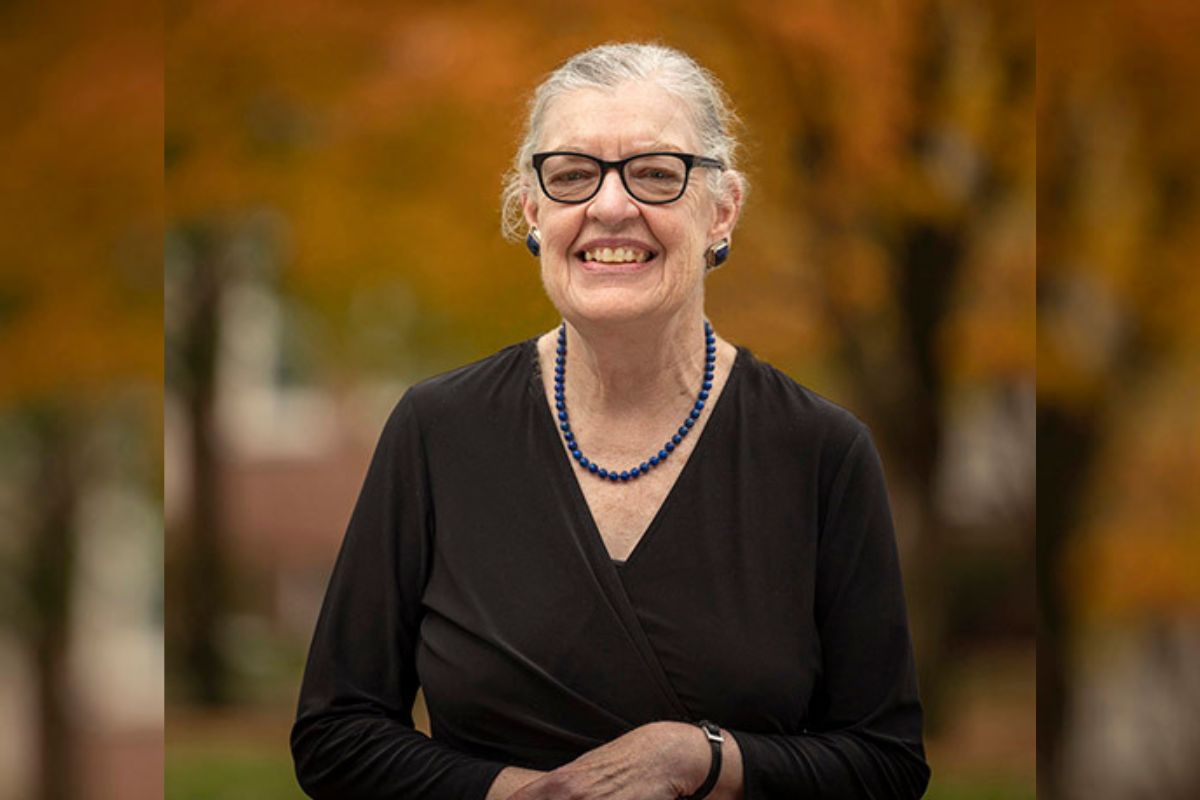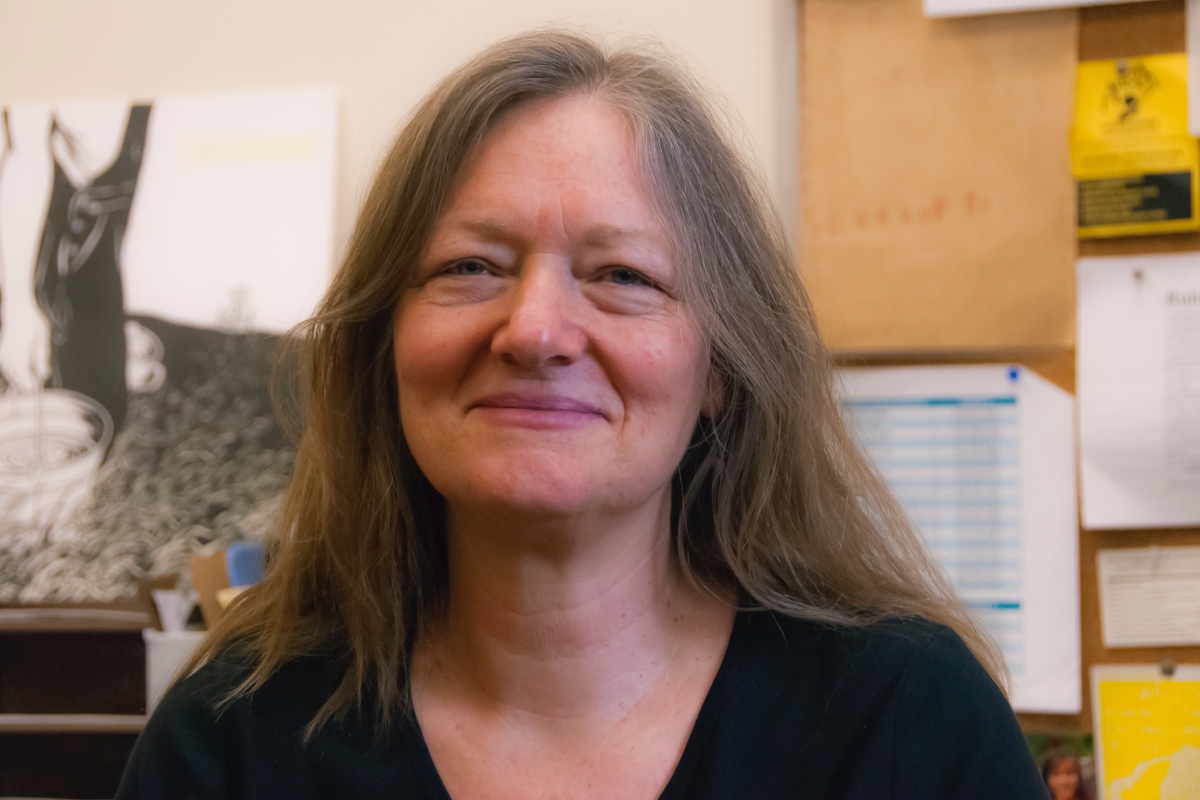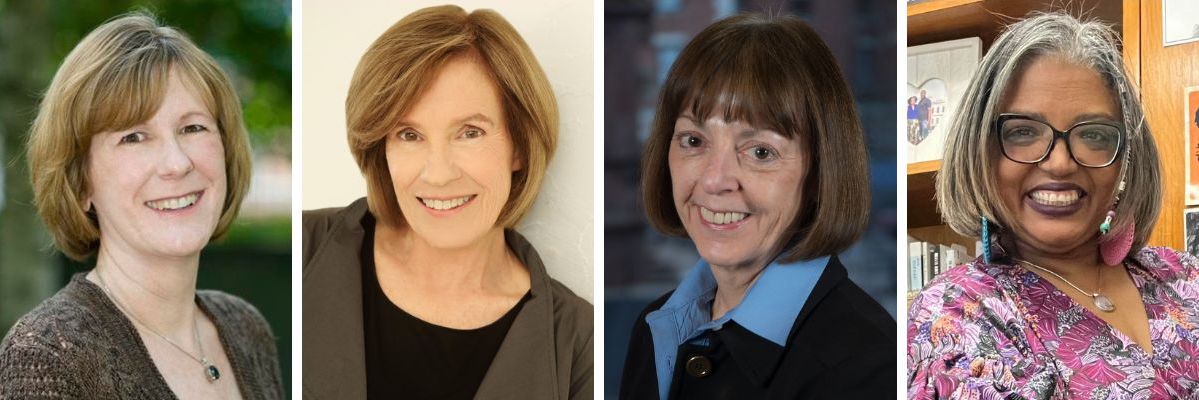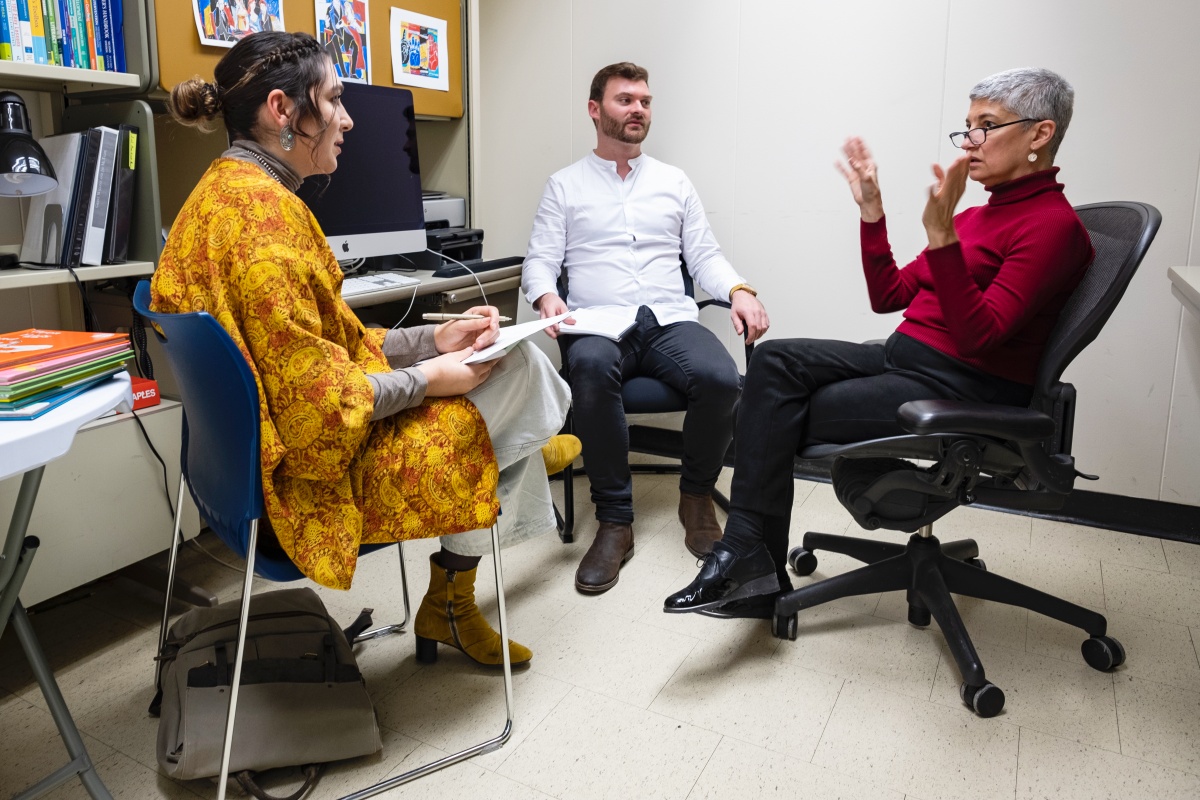Amid robust public discourse around literacy instruction, teachers, scholars, parents and teacher educators gathered at Teachers College on Wednesday, June 7 for a wide-reaching symposium to discuss how to best prepare teachers in comprehensive literacy instruction and support literacy throughout the lifespan.
Such a discourse was appropriate at the College — the top producer of teacher educators in the northeast and number one graduate school of education — where TC graduates are equipped with multifaceted approaches to instruction that incorporate a nuance rarely embedded in the historically polarized debate surrounding literacy.
“When we’re preparing teachers, we put the highest priority on fostering what we call a learner’s stance. That is, we don’t prepare teachers to follow recipes or scripts — rather, we seek to graduate teachers who are thinkers, carefully analyzing who each student is and what their learning needs are,” said Celia Oyler, Vice Dean for Teacher Education, in her opening remarks for what will be a year-long series on teacher education.
“If you’re in this audience,” President Thomas Bailey said in opening remarks, “it’s because you care deeply about the field of education and you bring a multitude of experiences and ideas to the table. We are grateful for this collective wisdom and commitment. I might add that the strength of today’s event is that it was created by TC faculty to share the wide range of practices that we use to prepare teachers of literacy.”
Here are the key takeaways you might have missed from the conference:
Prescriptive “one size fits all” approaches to literacy restrict student growth, and effective literacy instruction is nuanced.
Keynote speaker Catherine Snow of Harvard Graduate School of Education compared the debate on literacy to an ever-swinging pendulum in which dominant teaching methods fall in and out of favor among education leaders searching for the “right” one. However, for Snow, the goal should be “not to find who’s right, but how to narrow the arc of those pendulum swings” so students can receive effective comprehensive literacy instruction in all aspects of reading development, an interdependent combination of phonological awareness, phonics, vocabulary, fluency, comprehension
American schools face transformation now as 31 states and counting implement legislation to overhaul curriculum, after lower National Assessment of Educational Progress reading scores in 2022 added fuel to the ongoing debate over literacy instruction that has been renewed in the past several years. However, in Snow’s view, these sweeping policy shifts alone are often “misguided and overly inflexible.”

Catherine Snow, the John H. and Elisabeth A. Hobbs Professor of Cognition and Education at Harvard Graduate School of Education. (Photo courtesy of Harvard)
“It’s hard to do well-nuanced legislation about these things,” explained the John H. and Elisabeth A. Hobbs Professor of Cognition and Education, in part due to the sheer diversity of the American educational system across localities — which legislation, even on a state level, does not take into account.
Teachers and families in turn receive curriculum mandates that overlook the needs of students and schools while limiting the ability of educators to teach on a more individualized basis, Snow attested. The impact is particularly negative in under-resourced school districts, where staff and faculty must adjust lesson plans without funding, or in schools where educators are already so busy that the new curriculum is more of a distraction than an aid.
The focus on what has been popularized in the media as the “science of reading” — encourages this false binary in its very name, Snow pointed out.
“The science of how kids read doesn’t get you directly to how kids should be taught to read,” explained Snow, noting that the phonics-focused method can’t function independently of other ideologies precisely because so many words throughout the English language violate the basic rules of phonics itself.
Similarly misunderstood by many, comprehensive literacy is not without science, but in fact based upon extensive research on reading processes, development, and more.
Instead, Snow asserts that “what we do need is the science of teaching reading, and that’s where we have no data. We don’t actually know what’s going on in 15,000 school districts teaching reading,” she added, noting concerns about how curriculum is implemented and other challenges educators face on the ground.
Ultimately, however, Snow emphasized that students are in the crosshairs of the debate no matter what, and this fight over a singular correct approach to literacy could result in Snow’s worst case scenario: “Kids get really bored and never read for fun, and don’t understand how much fun it can be to get lost in a book.”
The false, historical dichotomy between literacy instruction methods is dangerous and hinders progress.
Highlighting the cyclical history of literacy instruction, Snow detailed the rise of “whole word” methods in the early 20th century, its decline in favor of phonics and an oscillating trend of practices for the better part of the past hundred years. Today’s “reading wars” are simply the latest chapter, and in looking back, Snow pointed out, one can’t help but have questions about policies boasting certainty on how to best teach reading to every child — another data point in the case for comprehensive literacy instruction.
Though distress among parents about reading proficiency is understandable, Snow attested that there are better questions at play than “which school of thought is better?” Snow, ever prepared, has a list for educators, researchers and policymakers alike, including perhaps the most paramount issue at hand: how does America stop (or slow) binary thinking about literacy?
For Snow, easing tensions across the reading debate is essential, with the cycle otherwise doomed to repeat itself as it has for the past several generations. With the latest wave of policy changes in school districts across the United States, Snow anticipates that it's only a matter of time before test scores among older students — struggling with comprehension and a lack of passion for the medium — dwindle, and the literacy pendulum swings once again.
For Snow, an effective path forward is only possible with nuance. “We need to stop vilifying each other.”
For TC instructors, a commitment to social justice principles helps meet the needs of diverse learners.
While the “false binary” on literacy learner is harmful to students broadly, it also distracts from the need for educators to be prepared to address “all learners’ widely divergent needs” in the classroom.
“There is no system or curriculum, or approach that can do that. It’s teachers, who are prepared to carefully assess each learner’s reading profile, who make the difference,” explained Celia Oyler, who moderated the panels throughout the afternoon. “At TC, our literacy instructors focus on putting children and youth and their learning at the center of our pedagogy.”

Celia Oyler, Vice Dean for Teacher Education. (Photo: TC Archives)
Incorporating social justice across disciplines was precisely what preservice faculty Kara Hollins, Maria Hartman, Sarah Creider and Jo Ann Delgado discussed. Whether they’re training teachers to support diverse classrooms; students with disabilities; students with limited or interrupted formal education; or students learning English as a second language, social justice and inclusivity are constant considerations for instructors at TC in their preparation of future educators.
“We see inclusive education as a political act. Social justice really undergirds all that we do in our programs,” says Hollins, a lecturer in the Preservice Elementary Inclusive Program, noting that she sees it as their responsibility to prepare adaptive teachers to support and advocate for students from marginalized communities.
The panelists — who each work closely with pre-service educators across disciplines — highlighted the need for interdisciplinary teacher preparation for educators so they can best serve students with a multitude of needs.

Panelists Kara Hollins, Maria Hartman, Sarah Creider and Jo Ann Delgado. (Photos: TC Archives)
“We're constantly teaching our students to analyze all aspects of instruction,” explained Delgado, a lecturer in the Applied Behavior Analysis program. “Teaching is not complete until the student has learned…with our teachers, we want them to leave [the program] knowing that effective readings and instruction are a form of social justice.”
The responsibility to foster inclusion in the classroom is relevant to all educators, but especially to those working with students with disabilities. Hartman, director of the College’s Deaf and Hard of Hearing program, does just that — and detailed her work helping students craft lesson plans and classroom interventions with the backgrounds, interests, skills, and challenges of pupils in mind. “We all work with specific populations of children and those populations have different needs.”
Inclusion in literacy instruction is also critical in classrooms with students who are English language learners. Creider, a lecturer in the Applied Linguistics and TESOL program, explained that these students often have “enormous amounts of lived experience with enormous practical knowledge,” But paired with limited literacy and anxiety in classroom settings, they need culturally specific modifications — or can often receive educational materials designed for younger children.
In addition to thoughtful classroom practices to foster inclusion and mitigate barriers to learning, educators also must be mindful of how critical it is for children to see themselves in the curriculum.
We have to look at the texts we’re bringing into the classroom…Do students see themselves in the text? This seems obvious; there’s an enormous amount of research about how important this is and we still need to keep talking about it.
Teachers need more support from K-12 school leadership.
That’s the response in-service teachers often share when participating in professional development , according to experts on the College’s second panel of the afternoon, featuring TC’s Carol Scheffner Hammer, Lucy Calkins, Susan Masullo, and Marcelle Mentor — also moderated by Celia Oyler.
Between time constraints and lack of administrative support, in-service teachers often report limited resources as holding them back when it comes to literacy instruction.
“I feel for classroom teachers. I don’t know how I would get it all in,” said Masullo, a senior lecturer at TC and the former director of literacy practicums in the Reading Specialist program. “I think we’re teaching an ideal but we have to be able to realize there is a reality to what goes on in the classroom, and [think about] how we can be efficient and effective in that respect.”

Panelists Carol Scheffner Hammer, Lucy Calkins, Susan Masullo, and Marcelle Mentor. (Photos: TC Archives)
Globally, teachers in the United States receive far fewer teacher planning hours than educators of other nations, with Korea providing the most for educators so they can maximize their expertise, Oyler noted. For TC’s Vice Dean for Teacher Education, advocating for policies that better support educators is the next step as districts implement “mandate after mandate.”
“One of the roles that university teacher educators need to play a lot more is stepping up and defending the structural limitations that mitigate against being able to do these great practices,” Oyler said.
That need for more support was felt in the room, when educators, parents, community leaders and more discussed today’s challenges and questions in an open dialogue during the conference’s concluding Town Hall.
TC alumni were among those who spoke out, including Bridget Looney (M.A. ’97, Early Childhood Education), who cites TC’s emphasis on curriculum development as helping her see opportunities despite constraints.
“There’s something about the TC program that enabled me to be an advocate and activist from the get-go,” Looney reflected. “Now in working in teacher ed, [I worry] that there’s too much concern about the structures and preparing teachers to work within constraints as opposed to preparing them to push back and work around [them].”
Such a challenge — building opportunities while working within the very real confines of ed policy — is one that Mentor, a lecturer in the English Education program, encounters regularly. The “social justice-oriented program,” Mentor says, encourages its students to imagine bold solutions and pursue them fearlessly.
“To balance that as a teacher is sometimes hard,” she says, “but also one of the things that comes with continued discussion, continued engagement and continued support and mentorship from like-minded folk” also committed to improving literacy for their students.
